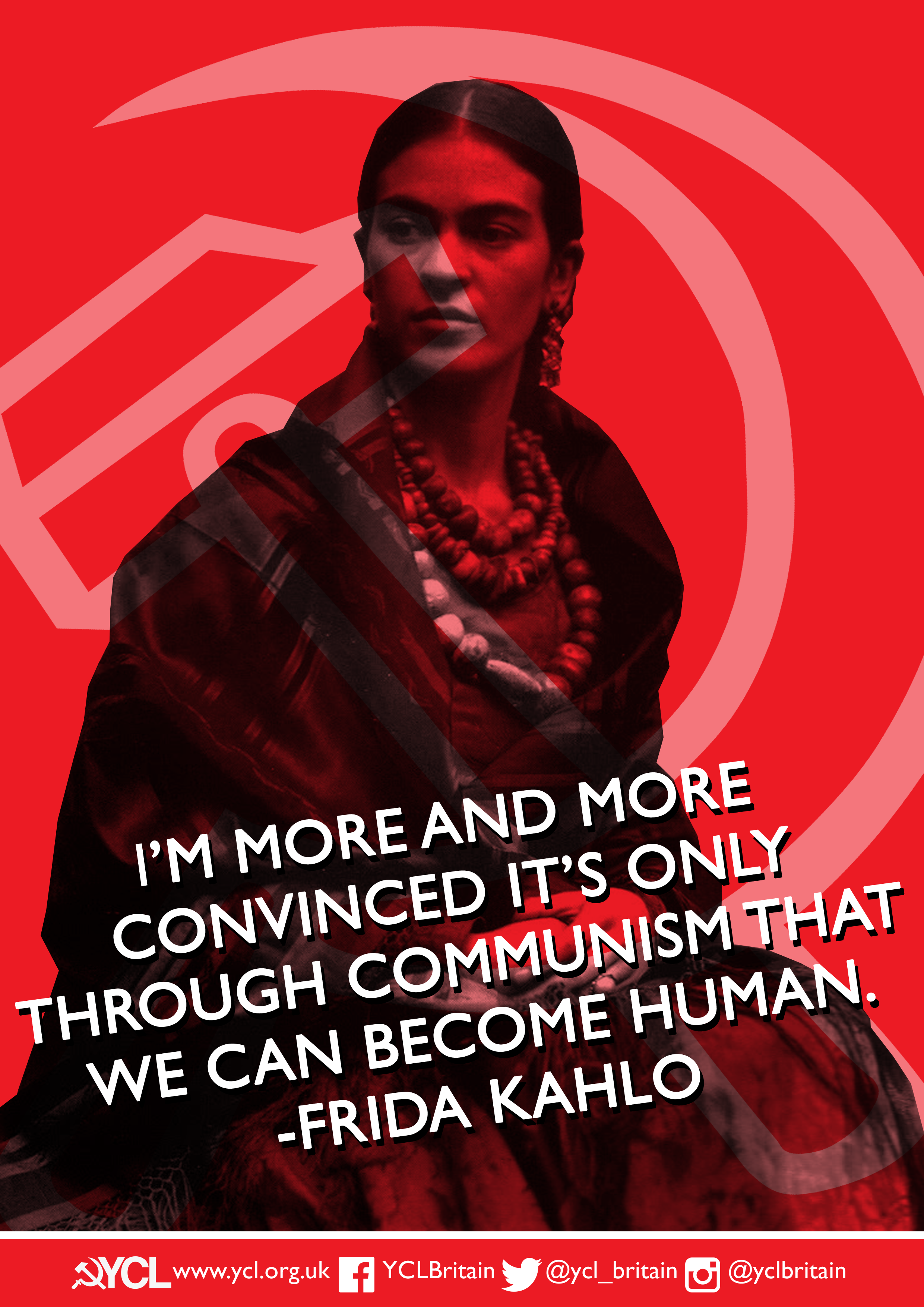 As part of a month long build up to International Women’s Day Celebrations on the 8th of March, the YCL will be publishing daily articles highlighting the exemplary role played by women in the international communist & working class movement.
As part of a month long build up to International Women’s Day Celebrations on the 8th of March, the YCL will be publishing daily articles highlighting the exemplary role played by women in the international communist & working class movement.
World renowned Mexican artist, feminist and anti-imperialist Frida Kahlo is our fifth Communist icon.
YCLers are encouraged to host, support and participate in celebrations locally to bring the message of International Women’s Day into Our workplaces, colleges and schools, and communities.
Frida Kahlo (1907 – 1954) was born in the early 20th century in an era of global political upheaval, revolutionary uprisings and world war. In turn, the artist´s native country was not immune to such instability and in 1910 Mexico was plunged into revolution. Kahlo´s childhood was set against a backdrop of armed rebellion against the suppression of the peasant classes, calls for land reforms and nationalisation of resources.
The rebels in part rejected a European-style cultural template as the ideal, in favour of promoting indigenous Mexican culture. The political fervour and reclaiming of a more authentic national identity not only informed Kahlo´s own political perspective but, in turn, would have a major influence on her later artworks.
Friday Kahlo joined the Mexican Communist Party at 20 years old. Here she met her future husband and painter of revolutionary murals, Diego Rivera. Kahlo was from a middle-class family and therefore benefitted from an education including a wide range of resources and reading. The artist´s father also encouraged his daughter in gaining full advantage of an education only made possible by the recent admittance of girls to preparatory schools during the revolution. Here the teenage artist was heavily involved with a group of socialists known as the Cachuchas. This small society of young intellectuals were known not only for their adolescent pranks, but also for their sharing of ideas on history, philosophy and the political theorizing of Marx.
While the revolutionary events of the era, an informed education, in addition to politically motivated associates, all aided the formation of Kahlo´s Marxist ideals, it was perhaps her personal circumstances that created an extra dimension to her perspectives. As a child Kahlo had suffered from polio, contracting the disease at the age of six and as a result was forced to spend nine months in bed. As part of her recuperation, Kahlo fought back against both her disability and gendered expectations of the era by taking part in sports such as boxing, to strengthen the weakness created by her illness.
The artist´s later only partial recovery from a catastrophic tram accident not only heavily impacted on her physically, but also aiding in forming her character and beliefs. Her ability to survive the tortuous aftermath of multiple devastating injuries emphasized her resilience in the face of extreme personal adversity. Both her pain and endurance were also often themes and motifs within many of her artworks, forming an empathetic link between Kahlo and all those who struggle and yet must fight to survive.
Having spent decades producing many ground-breaking and what may be described as feminist self-portraits examining the physiological and often painful areas of her own life, Kahlo`s move to a more overtly political stance was a form of resolution for the artist. As Kahlo´s commitment to the Communist Party grew, so did her wish to create a greater connection between her art and her political beliefs.
The artist’s home had been an open house to many radical thinkers. In the last days of her life she continued to be politically active, demonstrating against US imperialism in her wheelchair, despite the recent amputation of her leg and a deterioration in her general health. Kahlo died in 1954. A rousing chorus of The International was sung at the painter´s funeral and her coffin was shrouded in the red flag with the Communist emblem of hammer and sickle.
Kahlo, as a woman who defied the confines of gender under capitalist society, as a Mexican, as a survivor of great personal trauma and disability, knew only too well the meaning of the struggle to be free, an ideal she saw as embodied in Marxism. Her political beliefs, in addition to her art, her country and her lifelong endurance, defined the artist.